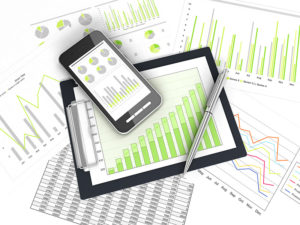If you’ve built your business from the ground up, it’s likely you started with accounting software—odds are, you started with QuickBooks. Most businesses do. However, there comes a point when QuickBooks no longer keeps up with your growing business, and you may hear that your next step is enterprise resource planning (ERP) software.
There is good reason for this—ERP is the logical next step for businesses outgrowing ac counting software. However, you may wonder what makes ERP different from accounting software, which is a common question for companies in your situation.
counting software. However, you may wonder what makes ERP different from accounting software, which is a common question for companies in your situation.
Following our last blogs on the warning signs you’re outgrowing QuickBooks; the issues it causes such as a weak audit trail, cash flow challenges, and poor visibility; and the problems caused by relying too much on paper and spreadsheets for financial management decisions, we would today like to explore this frequently asked question: What makes ERP different from accounting software?
Accounting Software: A Subset of ERP
When growing small businesses think of business management software like ERP, they often think of it as a more complex accounting software. While this is technically the case—ERP provides a variety of necessary accounting features—it also includes necessary business functionality as well. Before we can differentiate between accounting software and ERP, we need a clear definition of accounting software.
What is Accounting Software?
One of the best explanations of accounting software is provided by G2, a leading software review service. According to their definition, accounting software is a product that helps businesses streamline and automate finance management processes. This helps companies ensure their books are accurate and cuts down on the time it takes for recurring processes such as invoicing and reconciliation.
Accounting software products vary in complexity and the features offered; many products are optimized for use by companies of a certain size, such as enterprise-level businesses or SMBs (small to medium sized businesses).
Depending on the scale of the product, they can include features for payroll processing, as well as time and expense cost tracking. Some accounting solutions include industry-specific features such as project accounting for professional services companies and fund accounting for not-for-profit organizations.
In simple terms, accounting software manages the incoming and outgoing of your money. An accounting software records various business transactions including AR/AP, journal entries, and general ledger to produce balance sheets.
However, accounting is only part of a true ERP solution, and businesses need to understand that.
 How Does It Compare to ERP Software?
How Does It Compare to ERP Software?
While financial management software provides businesses with a full suite of accounting functions, ERP is much more than that. ERP offers industry-focused functionality and complete control over your business.
According to G2, ERP systems are complete, integrated systems that manage all aspects of a business, aligning financial management, human resources, supply chain management, and manufacturing with the core function of accounting.
ERP systems are used to provide transparency into the entire business process by tracking all aspects of production, financials, and materials. These expansive systems act as a central hub for end-to-end workflow and data. A variety of departments can view the information recorded by ERP systems to ensure that the correct procedures are taking place.
The Increasing Needs of Growing Businesses: When Accounting Becomes Only Part of the Solution
Accounting software is a necessity for all businesses, but it’s only the most basic need. Think of it like this: If you remember your Maslow’s hierarchy of needs, a person only needs physiological elements like food, water, and shelter to survive. Once basic needs are fulfilled, higher and more complex needs can be fulfilled—safety needs, social needs, esteem, and self-actualization.
The same goes for your business software application stack. For incredibly simple businesses (think back to your lawn-mowing days as a kid), you can get away with recording transactions on paper or in a spreadsheet. While great for the occasional transaction, when you launched a business, you realized paper and spreadsheets wouldn’t cut it, so you adopted accounting software for the financial side of your business.
Like Maslow, once each level of need is recognized, you begin to realize that higher needs take precedence. Depending on your business focus, you realize that you’re starting to have trouble tracking inventory, or dispatching field service people, or tracking employee hours. This is where ERP comes in.
Moving up the Hierarchy—from Accounting Software to ERP
There are several options for the next step up. Between Acumatica and Microsoft Dynamics products like Dynamics 365 Business Central and Dynamics GP, there is a complete, yet easy-to-use solution to help manage your entire business. These solutions provide growing businesses with not only the core financials, but deliver the broad functionality needed to manage the entirety of the business.
Thousands of customers have outgrown their entry-level accounting software and have turned to a true ERP (like Microsoft Dynamics or Acumatica) to support the next phase of their business. As a leading provider of ERP solutions, Crestwood has the experience and expertise to take you up the hierarchy from accounting to ERP, implementing software, training users, and helping you grow. Get to know us.
